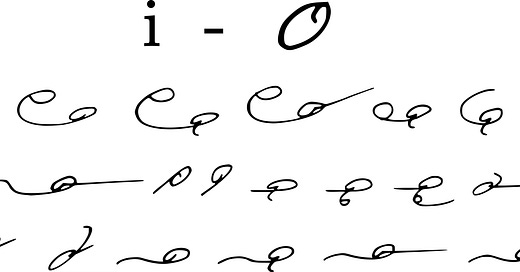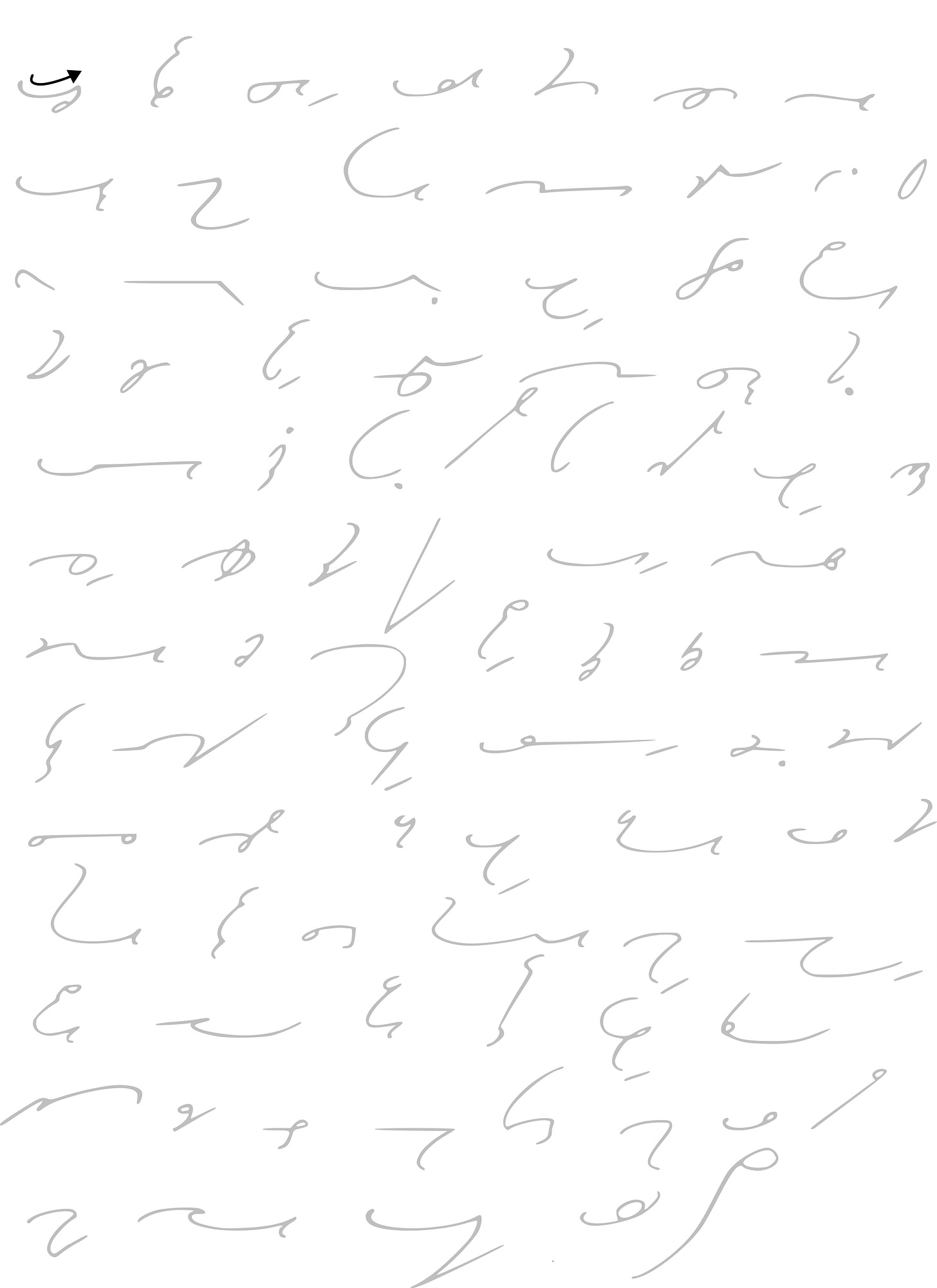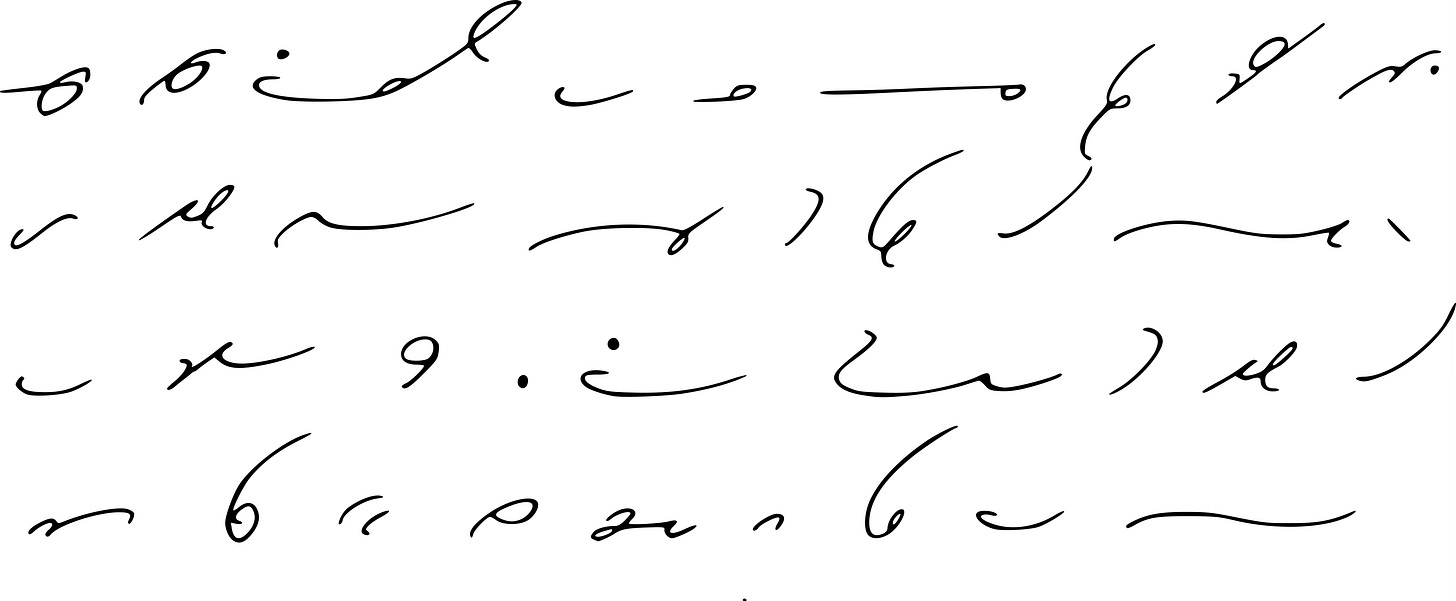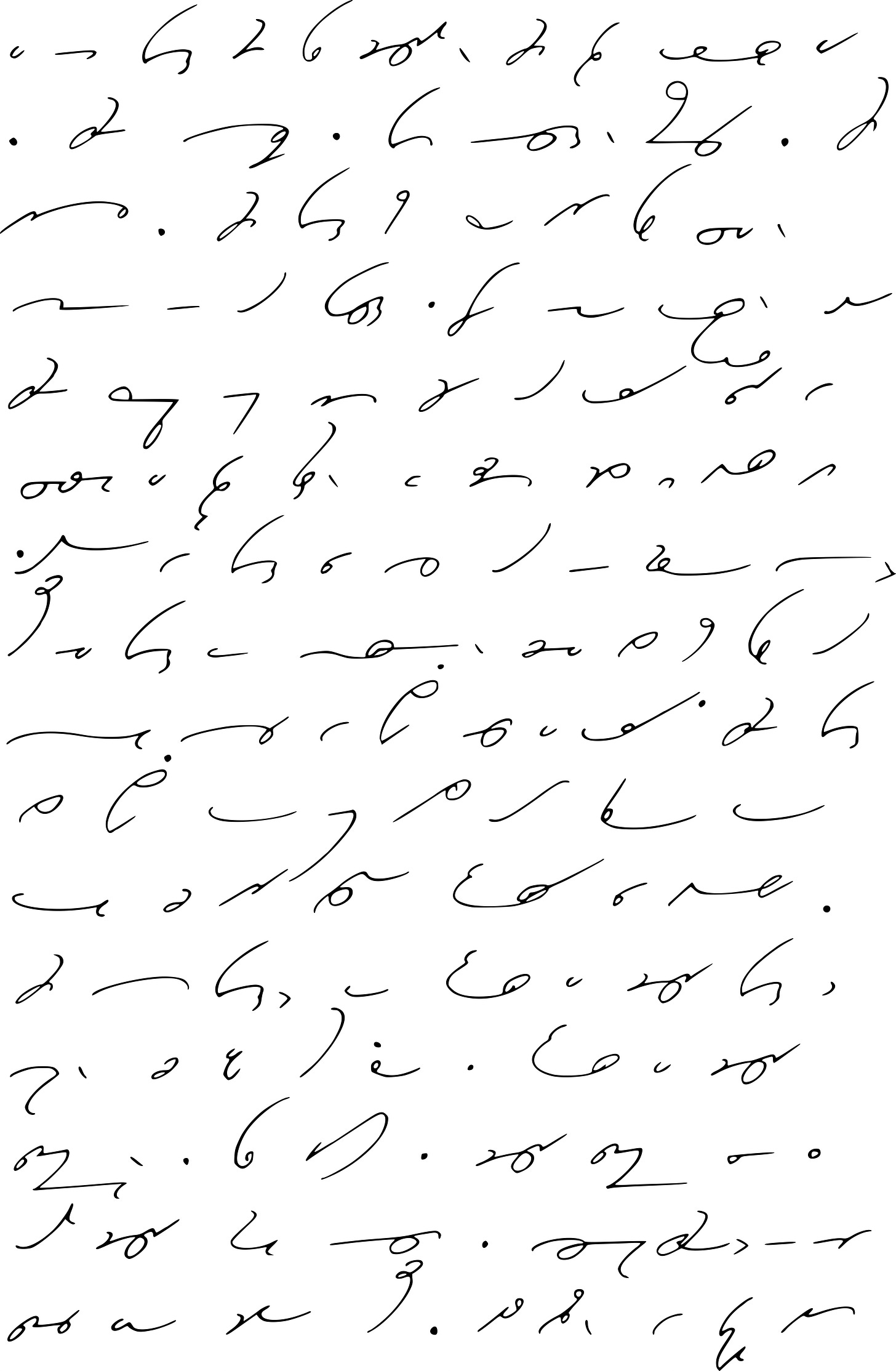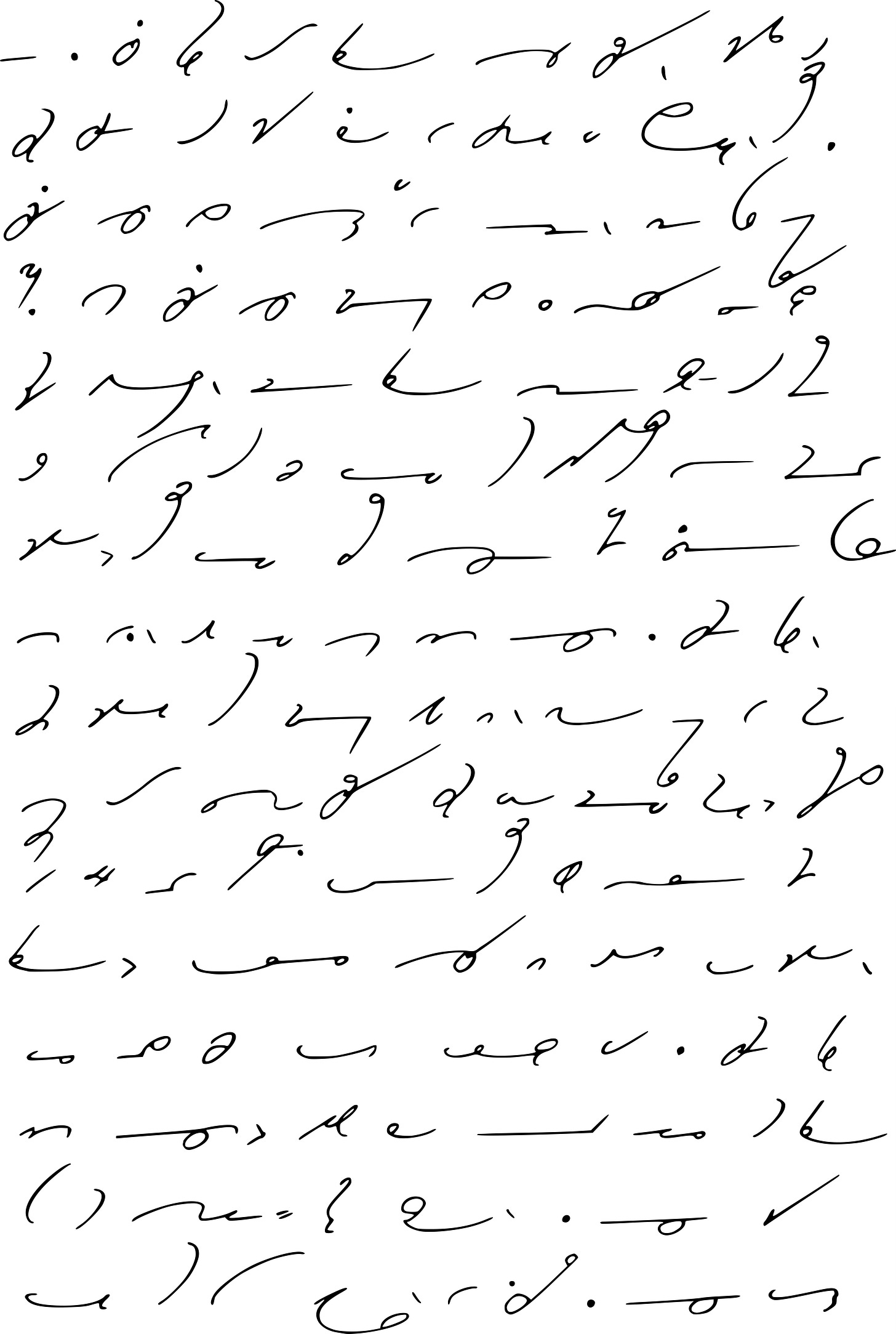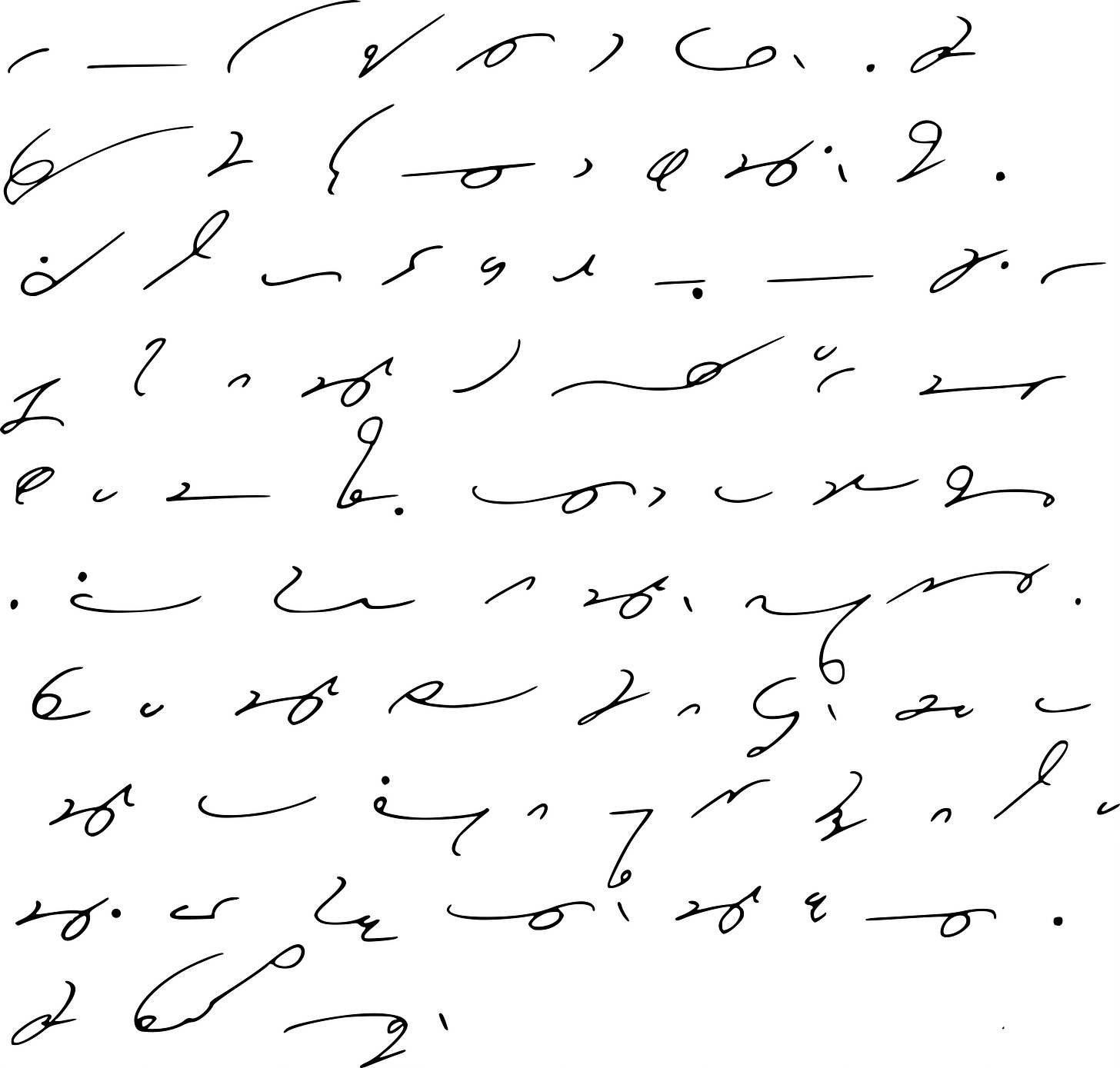Lesson 22: Beginning to Write Shorthand + The Diphthongs
Learn to express sounds like [u]-unit, [oi]-oil, [i]-isle, and [ow]-ounce.
Welcome back to the Learn Gregg Shorthand project! Just getting started with Gregg Shorthand? Check out the Archive and begin with Lesson 0.
If you have made it this far — CONGRATULATIONS!
Until this point, we have only been reading shorthand. But starting today, we get to finally practice writing shorthand! From here out, our homework for the rest of the assignments will be:
Reread the list of words and phrases at the beginning of each assignment
After you understand each form, print out and trace the list of words and phrases at the beginning of each assignment
Read the connected matter in shorthand (the reading homework), and once you understand it, copy the forms into a lined notebook (or use the free Gregg-Ruled worksheet attached to each lesson)
Here is a note from the author of Gregg Shorthand: Manual for the Functional Method about how you should approach the rest of the lessons in this series:
Always read the shorthand through from beginning to end before you write it. Never copy an outline without knowing the meaning. Refer to the printed transcript of the shorthand as often as you like, but continue to reread the shorthand until you can read the entire assignment once without having to refer to the key.
After you are able to read the shorthand easily, copy it in your notebook. Always write as rapidly as you can while keeping the hand under complete control. Aim at accuracy rather than speed, but do not draw the characters. From the outset, shorthand should be written. But you must remember that whatever you write, must be read; hence the necessity for good penmanship.
As skill in executing the movements is obtained, the speed may be increased until the forms can be written accurately at a high rate of speed. Try to acquire a smooth style of writing; execute each character with an easy, continuous motion of the pen and pass directly to the next without unnecessary movements.”
Ready to write? Let’s dive in.
Let’s start by translating and tracing the forms from previous lessons:
The diphthong “u” — as in unit — is expressed as:
Unit, cue, cute, acute, few, view, human.
The diphthong “oi” — as in oil — is expressed as:
Toy, oil, toil, soil, annoy, noise, voice, join.
The diphthong “i” — as in isle — is expressed as:
Lie, apply, applies, applied, arise, price, tries,
tried, climb, tie, tire, nice, nicely, nicer, sign, fine,
vine, sight, fight, cry, cries, crime, cried.
The diphthong “ow” — as in ounce — is expressed as:
Ounce, now, cow, scout, mouth, mouse.
Read + Copy the following:
“A Toy Store” (560 Words)
Have any questions or feedback?
I’d love to hear your thoughts—let me know in the comments if these lessons are helpful or if there’s anything I can improve. The comments section is also a great place to go if you are stuck.
That’s it for today! Be on the lookout for the solutions sent later this week.
I truly appreciate you tuning in and being part of this Gregg Shorthand learning journey! Your enthusiasm and dedication make this project worthwhile, and I’m excited to keep learning alongside you.
Grab my digital learning content—like the Gregg-Ruled Drill Sheet on my Shopify store. It’s a simple way to invest in your shorthand practice while supporting this project.
Most importantly, share this newsletter with a friend! Learning is always more fun (and effective) when you have someone to practice with. Let’s build a community of shorthand learners together.


